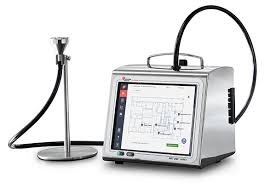SOP for Handling of Biological Indicators

1.0 Purpose
To define the procedure for proper handling, storage, usage, and disposal of biological indicators (BIs) used to monitor and validate sterilization processes (steam, dry heat, ethylene oxide, hydrogen peroxide, etc.).
2.0 Scope
This SOP applies to all biological indicators used in pharmaceutical sterile manufacturing facilities, microbiology laboratories, and validation activities.
3.0 Responsibility
- Microbiology/QC Department: To handle, store, and use BIs, analyze results, and document findings.
- QA Department: To review and approve BI records, and ensure compliance with regulatory requirements.
- Engineering/Production: To support BI placement and retrieval during validation studies.
4.0 Definitions
- Biological Indicator (BI): A standardized preparation of microorganisms (usually spores) with a defined resistance to a specific sterilization process, used to demonstrate efficacy of sterilization.
- D-value: Time (in minutes) required to achieve 90% reduction (1 log) of spores at a defined set of conditions.
- Z-value: Temperature change needed to change the D-value by one log cycle.
5.0 Materials and Equipment
- Biological indicators (ampoules, strips, self-contained vials) with Certificate of Analysis (CoA)
- Sterile forceps and holders
- Incubator (30–35 °C for bacteria; 55–60 °C for Geobacillus stearothermophilus)
- Growth media (as provided in BI kit or validated equivalent)
- Sterile containers for transport
- Biohazard disposal bags and autoclave
6.0 Procedure
6.1 Storage
- Store BIs as per manufacturer’s recommendations (usually 2–8 °C, protected from light and moisture).
- Do not use expired or damaged BIs.
- Maintain BI inventory log (receipt, lot number, expiry, storage conditions).
6.2 Usage
- Verify BI lot number, expiry date, and CoA before use.
- Handle BIs using sterile forceps or aseptic technique.
- Place BIs at worst-case or hard-to-penetrate locations within sterilizer load (e.g., center of packs, corners of autoclave, densest load areas).
- Always include a positive control (unexposed BI from same lot).
- After sterilization, transfer test BIs and positive controls to the microbiology lab in a sterile container.
6.3 Incubation
- Incubate exposed and positive control BIs under recommended conditions:
- Geobacillus stearothermophilus (steam/H2O2): 55–60 °C
- Bacillus atrophaeus (ETO/dry heat): 30–35 °C
- Duration of incubation: minimum 7 days (unless shorter time validated by manufacturer).
- Record growth (color change/turbidity) daily.
6.4 Interpretation of Results
- Acceptable Result: Exposed BIs show no growth, positive control shows growth.
- Failure: Any exposed BI shows growth → indicates sterilization failure. Investigate root cause, repeat validation if required.
6.5 Disposal
- Autoclave all used/positive BIs before disposal.
- Discard in biohazard waste as per facility waste management SOP.
7.0 Precautions
- Handle all BIs as potentially infectious until sterilization and incubation results are confirmed.
- Do not open BI ampoules/strips unnecessarily.
- Follow aseptic precautions to avoid contamination.
8.0 Documentation
- Record details in the BI logbook: sterilizer ID, cycle no., date, BI lot number, location, exposure condition, incubation details, and results.
- Retain all records and CoAs as per document retention policy.
9.0 References
- USP <55>: Biological Indicators — Resistance Performance Tests
- ISO 11138: Biological Indicators for Sterilization
- EU GMP Annex 1: Manufacture of Sterile Medicinal Products
- PDA Technical Reports on Sterilization Validation
🎓 Discover one of the best Pharmaceutical Microbiology course available —click below to explore the course that’s shaping future Microbiology course skills.

